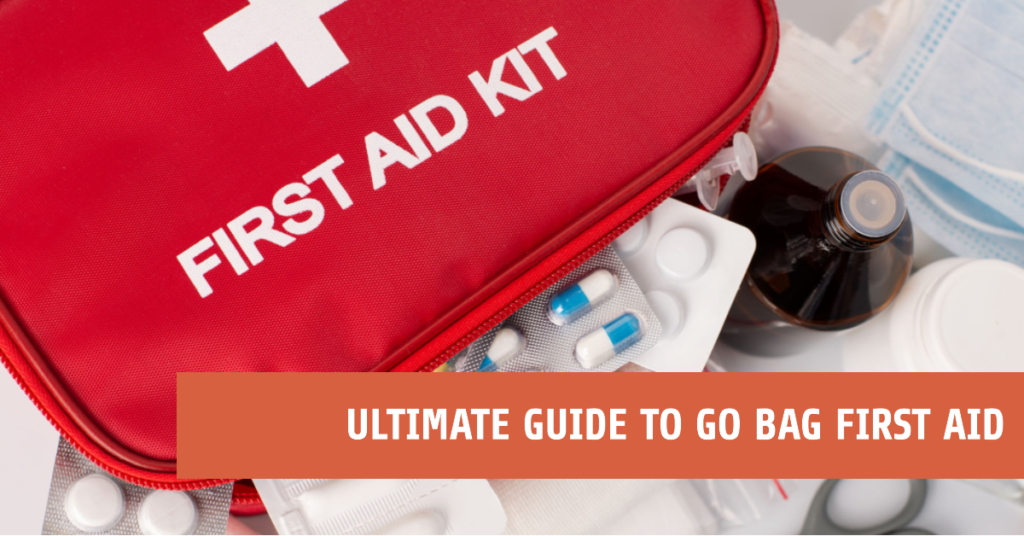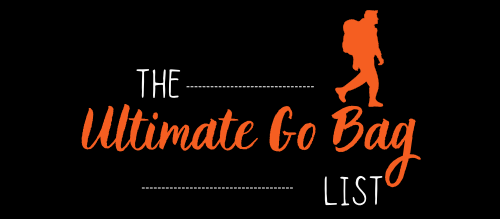
Building a Comprehensive Go Bag First Aid Kit
A well-stocked first aid kit is an essential component of any go bag. As an expert in emergency preparedness, I recommend including a variety of items to handle common injuries and medical emergencies. Be sure to pack:
- Adhesive bandages in various sizes
- Sterile gauze pads
- Antiseptic wipes
- Tweezers
- Medical tape
- Scissors
- Pain relievers, such as ibuprofen or acetaminophen
- Antibiotic ointment
- Hydrocortisone cream
- Elastic bandages for sprains and strains
- Instant cold packs
To further enhance your first aid kit, include these essential tools and supplies:
- Digital thermometer: Monitor body temperature during illness or after exposure to extreme temperatures.
- Medical gloves: Protect yourself and others from infection during wound care or other medical procedures.
- Oral rehydration salts: Replenish lost electrolytes during dehydration, diarrhea, or vomiting.
- Burn gel: Soothe and protect minor burns.
- Triangular bandages: Immobilize injured limbs, create slings, or use as tourniquets.
- Emergency blanket: Retain body heat during hypothermia or shock.
- Eye wash solution: Rinse eyes in case of foreign objects, chemicals, or smoke irritation.
- Face masks: Protect against the spread of airborne pathogens or provide filtration during smoke or dust exposure.
Customizing Your First Aid Kit
Tailor your first aid kit to your specific needs and the needs of your family members. Consider adding:
- Prescription medications
- Epinephrine auto-injectors for severe allergies
- Inhalers for asthma sufferers
- Blood glucose monitoring supplies for diabetics
- Extra eyeglasses or contact lenses
Special Considerations for Different Age Groups
When customizing your first aid kit, consider the specific needs of different age groups, such as infants, children, and seniors.
- Infants and children: Include child-sized adhesive bandages, pediatric pain relievers and fever reducers, child-safe antihistamines for allergic reactions, nasal aspirator for infants with congestion, and electrolyte replacement drinks or popsicles for dehydration.
- Seniors: Add items like a pill organizer for medication management, extra doses of prescription medications, and a list of medical conditions, allergies, and emergency contacts.
By customizing your first aid kit, you ensure the best possible care for your loved ones during emergencies.
Keeping Your First Aid Kit Updated and Ready
It’s crucial to keep your first aid kit current and well-stocked for emergencies. Follow these tips for maintaining your kit:
- Regular inspections: Check your first aid kit every three months to replace expired items, restock used supplies, and ensure all components are in good working order.
- Seasonal updates: Adjust the contents of your kit according to seasonal needs, such as including sunscreen and insect repellent during warmer months or hand warmers and an emergency blanket during colder months.
- Stay informed: Keep up-to-date with the latest first aid recommendations from reputable organizations like the American Red Cross or the Centers for Disease Control and Prevention (CDC).
- Document usage: After using items from your first aid kit, make a note to replace them as soon as possible.
Storing and Transporting Your First Aid Kit Effectively
Proper storage and portability are essential for your first aid kit to be useful during emergencies. Keep these guidelines in mind:
- Durable container: Choose a sturdy, water-resistant container with compartments for organization to protect your supplies and keep them organized.
- Accessibility: Place your first aid kit in an easily accessible location in your home, car, or workplace.
- Multiple kits: Consider having a first aid kit for various situations, such as one in your home, car, and workplace, as well as a smaller, portable kit for outdoor activities like hiking or camping.
- Visibility: Label your first aid kit clearly and consider using a brightly colored container to make it easy to locate during emergencies.
- Transportability: Ensure that your first aid kit is portable and lightweight, especially if you plan to take it with you during outdoor activities or evacuations.
By maintaining your first aid kit and ensuring it is always accessible and portable, you increase your preparedness for emergencies, regardless of your location or the situation.
First Aid Training
Familiarize yourself with basic first aid techniques, such as CPR and wound care. Proper training increases the effectiveness of your first aid kit and may save lives during emergencies.
Include reference materials and resources in your first aid kit, such as:
- A first aid manual: Provides step-by-step instructions for treating common injuries and illnesses.
- Emergency contact numbers: Include local emergency services, hospitals, and poison control centers.
- Personal medical information: Document allergies, medications, and medical conditions for each family member.
- Smartphone app: Download a first aid app, like the American Red Cross First Aid app, for easy access to life-saving information.
Explore resources like the American Red Cross for available first-aid courses.
Expanding Your Emergency Preparedness Skills
In addition to first aid knowledge, familiarize yourself with other vital survival skills, such as:
- Fire-building techniques: Learn how to start and maintain a fire in various conditions for warmth, cooking, and signaling.
- Shelter construction: Master the art of creating temporary shelters using tarps, emergency blankets, or natural materials.
- Signaling for help: Understand how to use mirrors, whistles, or fire to signal rescuers in various environments.
- Water purification methods: Discover different ways to purify water, such as boiling, filtration devices, or chemical treatments.
- Knot-tying: Learn essential knots for securing gear, constructing shelters, or creating rescue systems.
By expanding your skillset, you increase your ability to adapt and overcome challenges during emergencies.
The Importance of a Quality Go Bag
Building a comprehensive go bag first aid kit is a critical step in emergency preparedness. By carefully selecting, customizing, and maintaining your first aid kit, you ensure the safety and well-being of yourself and your loved ones in a variety of situations. Pair your first aid kit with essential go bag items and lifesaving skills to maximize your chances of survival and success during emergencies. Remember to regularly update your knowledge and skills, and stay informed about the latest recommendations
To learn more about go bag essentials, visit our comprehensive guide on “Essential Go Bag List: Your Comprehensive Guide”.
